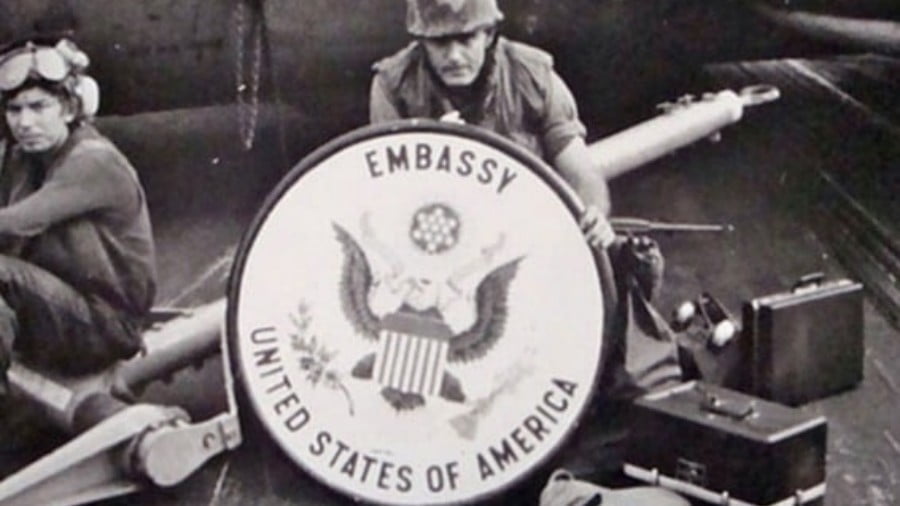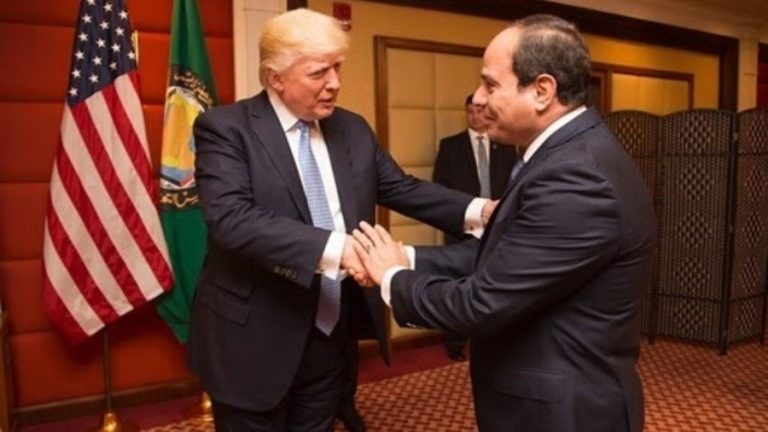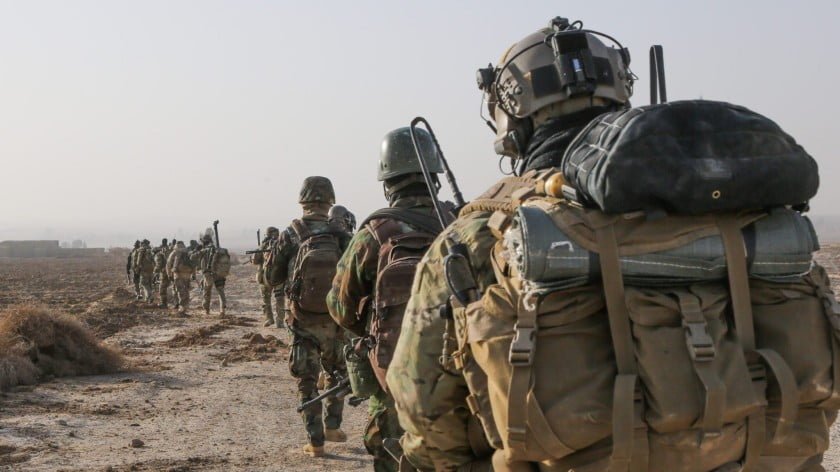Analysis of American Intelligence and Military Operations: The Tet Offensive
Preparations for the North Vietnamese and Viet Cong launched Tet Offensive started months before the evening of January 31, 1968. In 1967 the Vietnam-American War was stalled. The United States had prevented the North Vietnamese and Viet Cong from taking control of the South, but could not force them to abandon their struggle (Hess, 103).
The Offensive had two important preliminary tactical steps—one conciliatory and the other diversionary—launched in the fall of 1967 (Hess, 104). The war, which had been till then primarily waged in the countryside, would come to the cities. The most optimistic North Vietnamese projection was that the offensive would so demoralize the people of the cities and the ARVN forces that there would be a popular demand for Thieu to relinquish power to a coalition government (Hess, 104).
In analysis, American intelligence predicted that North Vietnam would launch an offensive against the south but the magnitude of the actual offensive effort went beyond what U.S. and ARVN military leaders anticipated. Prados states that from an intelligence standpoint, at some moment during the process of preparation it becomes possible to learn Hanoi’s intentions and that certainly a great many GIs doing their jobs in South Vietnam would have appreciated knowing (Prados, 130).
The record, along with the pattern of operations across the south, indicates that Hanoi and the Viet Cong began planning for the Tet offensive sometime in the summer or early fall of 1967 (Prados, 130). In October of 1967 there were attacks by the NVA in the provinces of Binh Long and Phuc Long and against the town of Loc Ninh. The later battle continued until November 8 and was simultaneous with an attack in Kontum Province.
During these battles the typical Viet Cong behavior of fighting and then fleeing to the jungles was altered. The normally elusive enemy attacked in the cities and stayed to fight. In accordance with reassuring the American government and populace that there was a “light at the end of the tunnel” Westmoreland played down these attacks. In response to the New York Times reporter, Neil Sheehan’s question of, “You think the battle of Dak To is the beginning or the end of anything particular for the enemy?” Westmoreland’s response was “I think it’s the beginning of a great defeat” (Prados, 133).
Important enemy documents were captured, but were treated with relative indifference by General Westmoreland, who was in Washington on publicity matters. One of the documents turned out to be a directive from the NVA B-3 Front, their headquarters for the Central Highlands, laying down instructions for a winter-spring campaign (Prados, 133). The directive mentioned “annihilating a major U.S. element”; encouraging improvements, in combat, of techniques of massed attack; liberating an important area; and affecting “close coordination with various battles throughout South Vietnam” (Prados, 133).
This writer questions why this directive did not cause more concern on the part of the U.S. military leadership and strategists. Even the capture of a North Vietnamese political cadre’s notebook did not seem to establish the importance of what NVA and Viet Cong actions were imminent. Vien’s notebook contained the significant entry, “Central Headquarters concludes that the time has come for a direct revolution and that the opportunity for a general offensive and general uprising is within reach.” The document further noted that military attacks would be used in conjunction with risings of local populations in actions against cities and towns (Prados, 134).
Underplaying the importance of this document was a major oversight on the part of the U.S intelligence. Predictions, even though not played out, proved too accurate. But the Agency did predict “widespread guerrilla attacks” on large units in “rural/heavily populated areas” as well as attacks on key “agencies and rear service bases” (Prados, 135). The CIA was dead on with their prediction: “The war is probably nearing a turning point and …the outcome of the 1967-68 winter-spring campaign will in all likelihood determine the future direction of the war” (Prados, 135).
Presidential advisors, specifically Walt Rostow, upon evaluating information in the captured documents, warned of the “restaging of the battle of Dien Bien Phu at Khe Sanh” (Prados, 136). For years Westmoreland had been anticipating efforts by the North Vietnamese army to overrun the provinces adjacent to North Vietnam.
In I Corps Westmoreland had anticipated North Vietnamese attacks but more in the Khe Sanh area (Prados, 152). The high level of interest in the Northern provinces, plus strategic and tactical warning, it’s a measure of intelligence failure at Tet that Hue city was taken by surprise (Prados, 153). Failure to decipher intelligence or fixation on Khe Sanh was the cause for failure to anticipate the onslaught that would come to Hue (Prados, 159).
On the American Homefront, there was a false sense that it was just a small matter of time before the Communists would lay down their arms. How deceived the American public was! Aerial reconnaissance detected a 200 percent increase in truck traffic down the Ho Chi Minh Trail (Prados, 136). The numbers of NVA coming to the south ranged from 10,000 to 30, 000 per month (Prados, 136). These factors all seemed to fit together to form an answer as to what the NVA and Viet Cong were planing for the next phase of the war.
At the CICV it became apparent that there would be attacks on the cities during Tet. Although this fact was recognized, also by an ARVN officer, preparations for such an onslaught were downplayed so that it would not be interpreted that the U.S. was taking propaganda seriously (Prados, 137). At the II Field Force, documents were analyzed to suggest that there would be several Viet Cong units that would all share in the attack upon Saigon. The corps intelligence chief, however, would not allow his subordinates to write an estimate predicting urban attacks. When subordinates drafted such an estimate anyway, he (Fred Weyand) demanded it be rewritten (Prados, 137). Fortunately, General Weyand did take precautions against such attacks as he strongly felt there would be attacks against the cities.
On January 15 Westmoreland reported a 60-40 chance the campaign would commence before Tet (Prados, 138). By January 22 Westmoreland thought that the main event would be at Khe Sanh. Other targets included Kontum, Pleiku, three CIDG camps in these provinces, and providence towns in III and IV Corps and attacks against Saigon were seen as possible (Prados, 139).
Another cable, MAC 00967, was sent and Westmoreland then added the northern two provinces and the locations of Hue and Quang Tri to the possible sites of aggression by the North Vietnamese and Viet Cong. It was even decided by Westmoreland and Ambassador Elsworth Bunker that the Tet should not be observed in the northern most provinces and observances to be limited to only thirty-six hours in the others. Ambassador Elsworth Bunker reported to LBJ:
The primary [VC/NVA] objective of winning the war as one great series of attacks on the cities does not preclude a lesser objective. Hanoi may well have reasoned that in the event that the Tet attacks did not bring outright victory they hoped for, they could still hope for political and psychological gains of such dimensions that they could come to the negotiating table with a greatly strengthened hand. (Prados, 151)
The new date of the expected attack was to be January 25, which did not pan out. In a stoke of luck for the U.S. and the South Vietnamese, some of the offensive attacks were launched prematurely and gave a warning and some intelligence was gathered to give some commanders time to give alert orders and the MACV alert went out on January 30 (Prados, 139).
Gathering intelligence is one thing, but this intelligence must be used to predict enemy intentions. Moreover, as frequently happens in intelligence work, indicators can be misleading or even deliberately deceptive (Prados, 134). The fact that the Tet Offensive was going to happen was not a total surprise strategically. However, the timing and the intensity of the attacks were a surprise and a psychological shock (Prados, 139).
It seems that speculation of where and when the attacks would take place kept any concrete defensive from being put into play. Perhaps just the vast extent of where the attacks might possibly be positioned made the whole concept of defense seem to be hopeless. In actuality, it may have been virtually impossible to fortify all bases, airports, and cities to avoid loss to NVA and Viet Cong.
For some reason Westmoreland could not fully believe that the Communists would attack on the holiday. Perhaps he should have thought about whether it is the nature of war to stop for holidays. Again, the NVA and Viet Cong benefited from the use of surprise. The U.S. was not used to this enemy fighting and then sticking around after the initial battle to fight some more. It was fortunate that some commanders and men went with their gut feelings on what they felt may happen and prepared themselves as much as they were able to.
The side on the offense usually has the advantage in battle if the battlefield is even. The defender often must watch and wait. The diversion of increasing the NVA forces to the area around Khe Sanh, allowed the Viet Cong to smuggle weapons into Hue and Saigon. The early warning of the premature attacks alerted the MACV and ARVN and they were able to cancel the Tet cease-fire.
It is obvious that the Viet Cong knew what they were doing when they stormed the U.S. embassy. The nineteen sappers would have been enough to have taken the nighttime force that occupied the embassy. Lack of support of local officials was disheartening to forces assigned to defend the embassy. Except for one man who popped into the embassy building at first sign of trouble, the Vietnamese police disappeared and took no part in the battle (Prados, 145). The delivery of three cases of M-16 ammunition to the embassy was a major error due to the fact that there were no M-16s being used. Someone was not thinking. The kidnapping of the Philippine ambassador and Prime Minister Nguyen Van Loc were thwarted. Luckily, the brief capture of the radio station did not give the enemy advantage since the transmitter was not located at that site. Due to preprogramming, the transmission continued without interruption.
If the Viet Cong had been able to broadcast to the citizens of Saigon there would have very well been panic within the city. Camp Phu Dong, several BOQs, and the Co Loa artillery base all came under attack. All of the soldiers at these facilities were able to repel enemy aggression even to the quick action of the ARVN gunners, in their retreat from Co Loa, dismantling their artillery guns to deny the enemy their use. There were errors made on the side of the enemy, which helped the U.S. and South Vietnamese forces to repel and take back many of these sites. In the confusion the VC missed a chance to liberate a prisoner camp and diluted their main attack (Prados, 147).
Westmoreland had always felt that the NVA would try to overrun the northern most provinces in South Vietnam. Westmoreland anticipated an NVA offensive in I Corps, albeit around Khe Sanh (Prados, 152). Prados felt that someone was not paying attention. Given this high level of interest, plus strategic and tactical warning, it is a measure of intelligence failure at Tet that Hue City was taken by surprise. One may attribute this to an American fixation with Khe Sanh, or failure to disseminate intelligence properly (Prados, 153).
Delays in getting to Philip Manhard, senior civilian advisor for the Civil Operations and Revolutionary Development Support unit, caused him to be captured and to spend several years as a POW. He was one of several civilians who was captured, interrogated, and imprisoned by the NVA. Had intelligence been more accurate, The U.S. and South Vietnamese troops would have been more prepared for the onslaught at Hue and would have not been driven from the imperial city and consequently many South Vietnamese civilians would have not been massacred. This tragedy gives dimensions to the intelligence failure that permitted the North Vietnamese to gain control of the city (Prados, 155).
For the U.S. and ARVN, poor weather conditions would not allow for the usual amount of support from the air, the use of irritating gases, or insertion of troops by helicopter. There were many acts of heroism by soldiers who were trying to keep the NVA and Viet Cong at bay. In the fighting for Joan of Arc School…the able Sergeant Alfredo Gonzales of Alpha Company, 1/1, won the Medal of Honor while commanding Third Platoon (Prados, 160). Soldiers had fear, but not a fear of dying because that was a given (PBS series, Tet 1968). Even with this fear, they valiantly fought in some of the fiercest battles to date. In the battle to retake Hue, much of the remaining occupied area of the city was to be taken back by hand to hand combat, inch by inch. The South Vietnamese Marines proved to be less up to the task. In fact the Vietnamese marines proved generally disappointing at Hue,…(Prados, 163).
Khe Sanh seemed to Westmoreland to be particularly susceptible to attack. It was generally thought that any leverage the enemy gained here would allow him to march down into the south. …Westmoreland became convinced that III MAF “were particularly underestimating an enemy threat to the CIDG-Special Forces camp in Khe Sanh” (Prados, 167). The CINCPAC-MACV Report on the War in Vietnam stated:
Were we to relinquish the Khe Sanh areas, the North Vietnamese would have had an unobstructed invasion route into the two northern-most provinces from which they might outflank our positions south of the Demilitarized Zone. Khe Sanh was also important offensively for ops into Laos and take off point for reconnaissance planes. (Prados, 167)
Khe Sanh was important to the U.S. from the offensive standpoint. LBJ’s intense concern for Khe Sanh not becoming another Dien Bien Phu, was another reason that much preparation was taken to fortify this base. The actual battle at Khe Sanh did not start until February 5, some five days after the beginning of the Tet Offensive, but was waged well into March.
Many in Washington felt that the fortification of this base would come at the expense of troops not being available for other areas. General Maxwell D. Taylor voiced this in memorandums to Washington. In a second memorandum two days later, Taylor went even further:
My review of Westy’s cables does not convince me of the military importance of maintaining Khe Sanh at the present time if it is still feasible to withdraw. Whatever the past value of this position, it is a positive liability now…I have real doubt that we can afford such a defense. (Prados, 173)
In the end, the worry of attack on Khe Sanh may have been a red herring. While forces were fortifying this area the NVA and Viet Cong were attacking cities to the south. The U.S. could claim to have repulsed the NVA and Viet Cong, but the enemy had made this area seem more important than it was and thus, funneled troops and attention away from the cities in South Vietnam. Prados felt that the mindsets of the individuals responsible for orders given were something that affected how the dangers from North Vietnam were perceived. While writing of the shock of the Tet Offensive Prados states:
The prospect of such a shock was in fact inherent in the situation—the daily lengthening of the war, the Viet Cong and North Vietnamese presence throughout the country, and the mind-sets of American officers and officials. These were factors that could not be changed by strategy, no matter how ingenious. (Prados, 140)
As the tactical results are analyzed, the United States and ARVN were the clear victors. Even though the NVA and Viet Cong displayed here to fore uncharacteristic fighting strategies, the U.S. and ARVN forces were able to vanquish them from the cities, military installations, and official sites that they hoped to occupy. The fierceness of the NVA and Viet Cong attacks was what surprised the U.S. and ARVN forces.
The assault on the U.S. embassy in Saigon was a bold move but all insurgents were killed. The radio station may have been occupied briefly and then blown up, but transmissions were not altered. The siege of Khe Sanh and the even fiercer battle at the ancient city of Hue eventually resulted in victories for the U.S. and ARVN. The enemy had to be met on many fronts, virtually simultaneously, but the U.S. and ARVN forces were able to squelch all uprisings and eventually retake any temporary strong hold the enemy enjoyed.
Individual acts of heroism, strength, ingenuity, and leadership all contributed to the eventual belaying of the enemy. Captain Cong, the district chief, called in air strikes and artillery fire on his own position. He kept the enemy at bay until daylight (Prados, 130). The Viet Cong were never again the fighting forces they had been. The people of the South did not rise up and support the Communist forces and future fighting was done by the NVA. The NVA offensive push forced the U.S. to the negotiation table, but tactically the NVA lost their battles and discovered that there would not be a base of support in the south for their reunification efforts.
References:
Hess, Gary R. Vietnam: Explaining America’s Lost War.
Prados, John. Vietnam: The History of an Unwinnable War, 1945-1975.
By Carol Duff, MSN, BA, RN
Source: Veterans Today







